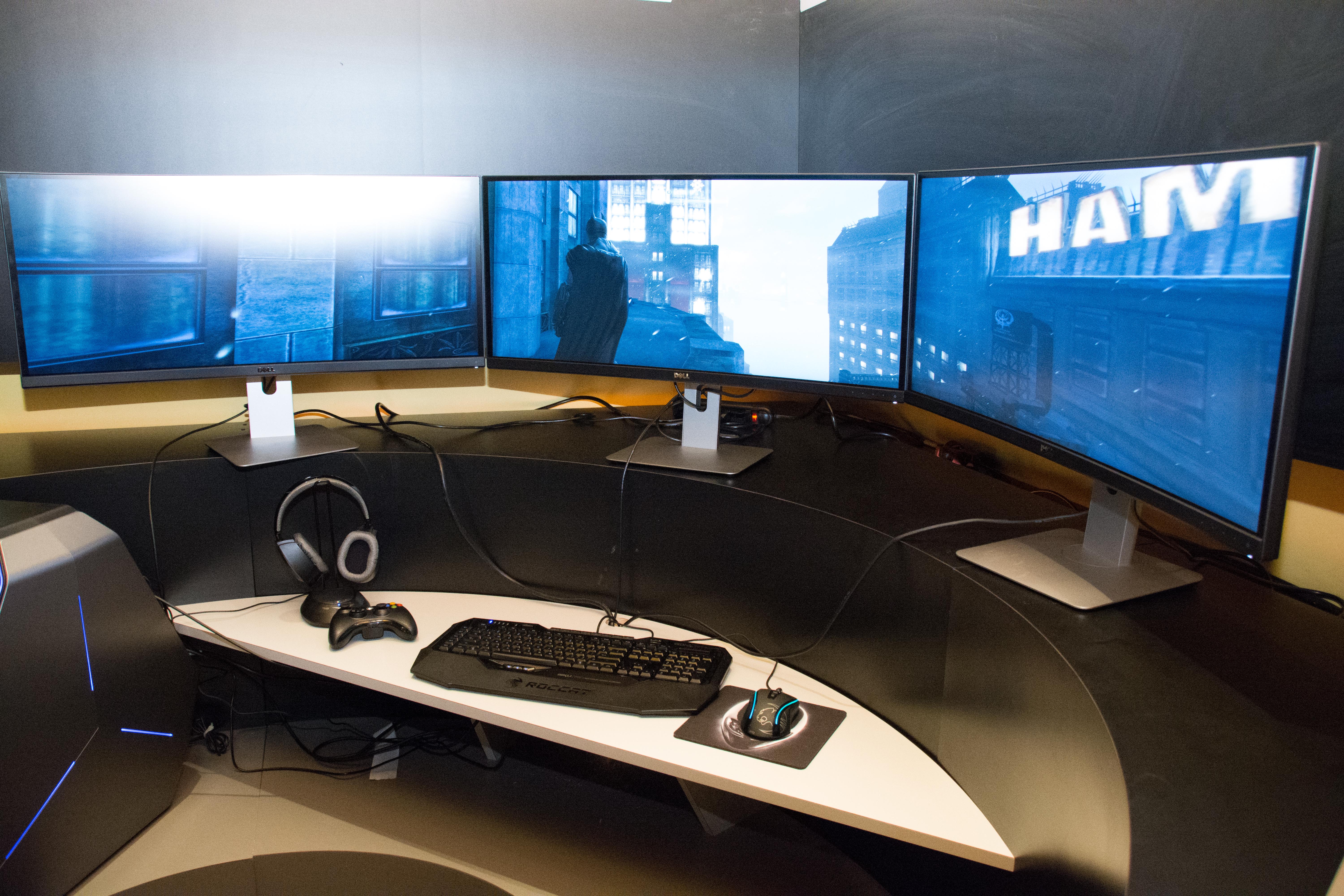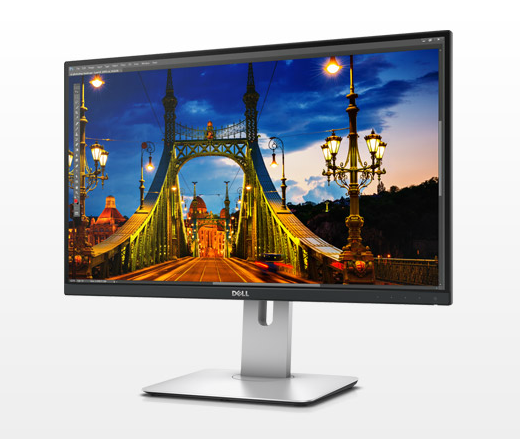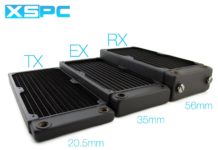Dell is not a company that is traditionally “up our alley” in terms of computer hardware, afterall so much of the Dell portfolio is premade systems which is the anithesis of our mindset. However every one needs a monitor and Dell have dominated over the years in terms of high end “pro-sumer” monitors with higher resolutions. The Dell Ultrasharp lineup, particularly the 2560×1600 monitors were very common for a long time before the bargain priced 120Hz overclockable Korean monitors came along. However Dell didn’t give up and fought back by being one of the first companies to introduce a range of different 4K monitors. Then to top it off, they were the first to produce a standalone 5K monitor which is now available.
At CES they were showing off three displays that were off interest. The first of course is the sexy 5K monitor – the UP2715Q – which has been up for sale for only a few weeks now for the small sum of ~$2000:
5K resolution is the somewhat odd nickname given to this resolution of 5210×2880 pixels, i.e. 14.7 million pixels. If you think that’s only 20% more than 4K you have to remember that’s more pixels in both directions. A 4K monitor is only 8.3 million pixels, so it’s almost double the number of pixels. On top of that the monitor is only a 27″ IPS panel, while most 4K monitors are 28-32″.
While I would have loved to see a 32″ version, IPS is at least exactly what you want at this point in time for the target audience. 120Hz is not possible with a displayport 1.2 connector so the slower response time of IPS type panels isn’t a concern for anybody who should be interested in this panel. Indeed 60Hz isn’t even possible with a single display port 1.2 cable, and so two cables have to be used for each half of the screen. Prerecorded 5k content was being displayed on the screen, and there were no indications of a problem due to this multistream. The question is really whether games will not only support 5K at all, but also will they do so in a way that will not have any glitching between the stream borders. Sadly there were no games loaded on the demo computer and so we were not able to prove this out. Bear in mind though that not all graphics cards have two display port outputs. Both AMD and Nvidia can use multiple cards however to drive each cable, but AMD requires all the display outputs to come from one card when gaming with eyefinity. Therefore we expect gaming to be limited to the AMD R9-295×2, 7990 and 7970 Matrix cards on “Team Red”. Team Green’s ability to combine outputs from multiple cards to make up a surround stream will mean that almost any high end card will most likely be able to game successfully at low enough settings once the driver support and game support is there. Of course for “high settings” on any modern game we are going to expect you to need 4 of the latest GPU!
IPS of course means great viewing angles, great contrast and great colors:
The monitor is also sleek and thin:
In addition the front of the display is bonded glass, so there is no ugly plastic bezel sticking out around the edge. Now although there is no bezel there is still black “dead” space between the pizels and the edge of the case. It’s not slim, but it’s certainly no worse than most other high end high resolution displays.
Of course at this price point it can also rotate:
The pixels are so small that even getting real close with a macro lens it’s hard to make them out:
Of course there is also a USB hub:
The monitor also has a mini Display Port input that can run at 4K and gets autoscaled up. Of course scalars can introduce latency, so again this monitor will need some quality testing before it can really be verified as appropiate for high end gaming.
At this price point though we would have liked to have seen two 5K capable inputs for those people who want to hook up multiple rigs. One thing is clear from seeing this monitor in person – 5K is awesome, the picture is so crisp and perfect, it’s hard to imagine what 8K will bring. The real question is whether this should be the 5K monitor you buy, or whether you wait for display port 1.3, and maybe a few more inches and inputs! In addition for those users who want a beautiful rig without a powerful upgradeable computer attached, then Apple’s 5k iMac costs only $500 more and includes a decent computer.
The second most interesting monitor at the Dell booth was the curved ultra wide monitor – the ultrawide U3415W has a resolution of 3440×1440, i.e. 21:9.
21:9 is great for watching movies, however 1080P movies will need to be upscaled and 4K movies will need to be downscaled a bit. It’s also great for work however, as you can either fit a ton on your screen or have two windows side by side. Again this monitor is an IPS panel, this time made by LG. Dell had three setup in landscape for an Nvidia Surround setup powered by one of their alienware computers:
I had heard of these ultra wide setups before, and having tried 3×16:9 monitors in the past it seemed ridiculous to even go wider than that. I thought that the extra horizontal pixels would be useless, while the loss of the vertical pixels vs 4K for example would be missed. The actual result of a ridiculously narrow 63:9 setup was surprisingly immersive and impressed me far more than I thought.
The curve of the screen is enough to really help with surround, but not so much that it feels unnatural:
Of course it helps that the bezels are slim (12mm on the sides), and the wide viewing angles of IPS means that non centrally positioned viewers can still see the screen well:
The back is still clean:
Possibly one of the best additional features is that the USB hub has two inputs, and switches when the other display input is changed. In otherwords it has a built in KVM switch. This is awesome. If you have a monitor with multiple inputs that you actually use then you know you either have a stack of keyboards and mice on your desk, or you’ve bought a separate KVM box. This is a real value added feature that we hope to see going forward on more monitors.
The last monitor we saw was of interest mainly because of it’s small bezels:
The U2515H is a strange size at 25″, but it has a decent resolution of 2560×1440. While 1440@60Hz is hardly new, the slim 7mm bezels on the sides and higher PPI mean that a high resolution display can be made quite easily. It’s still IPS and still has 99% sRGB coverage, so it is still a quality monitor. The downside is that the bottom of the display still has a thicker bezel so that 3 in portrait is not possible while maintaining slim bezels.
Summary
Overall we love what Dell is delivering to the enthusiast here. While none of these are perfect, we still would love to have and use any of these!


























[…] CES we saw a bunch of 34″ ultrawide curved monitors. For example Dell had a setup of three in landscape for surround gaming that we really found awesome and immersive. […]
Comments are closed.